More info:X|CulturalTutor.com
The buildings that surround us can tell a lot about what society values the most
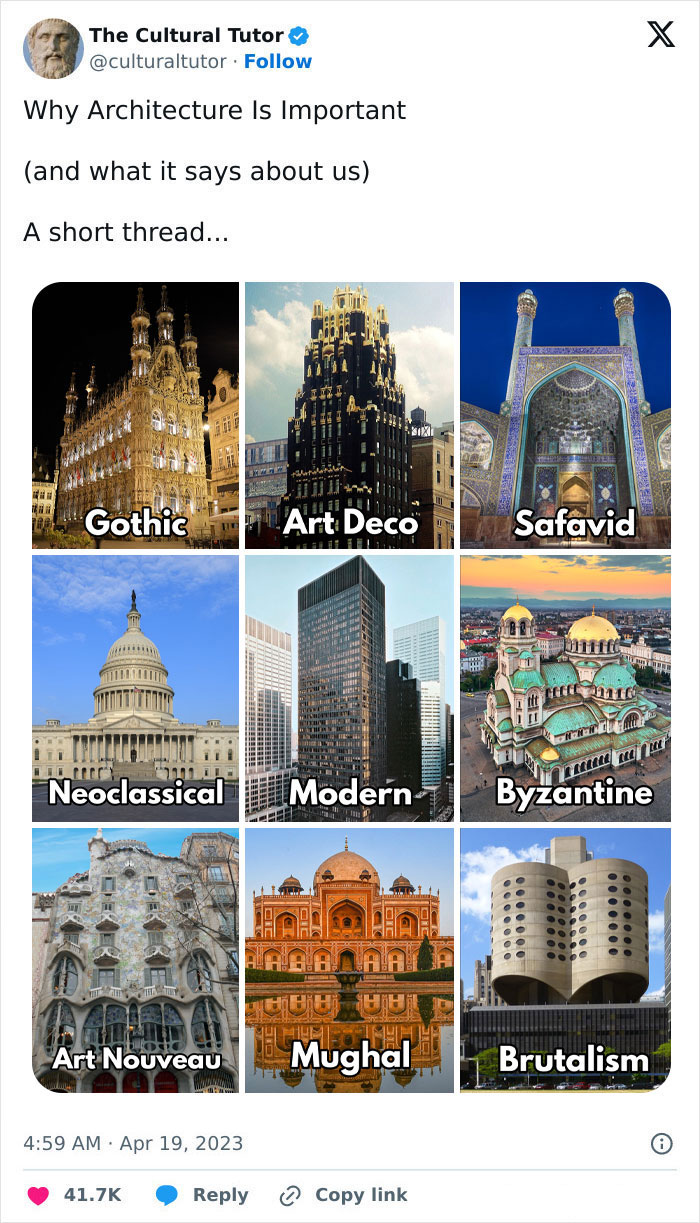
Image credits:culturaltutor
The Cultural Tutor, a massively popular account on X, explained exactly why architecture is so vital
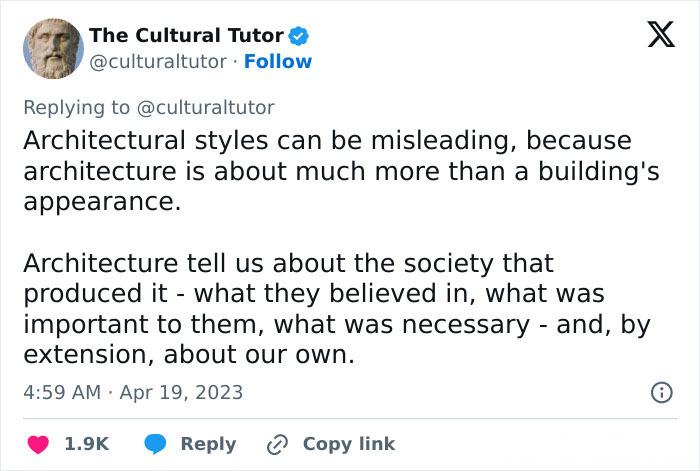
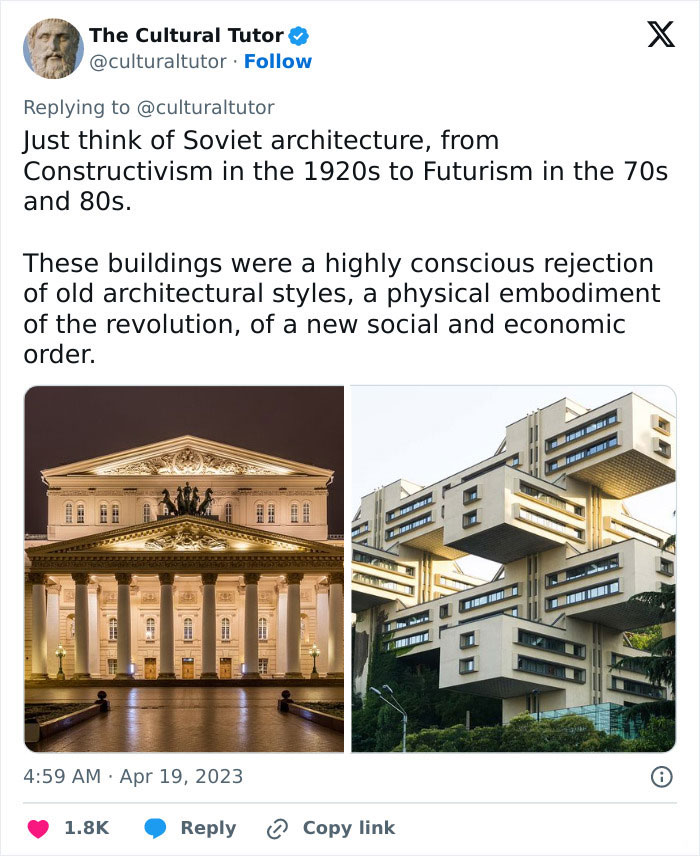
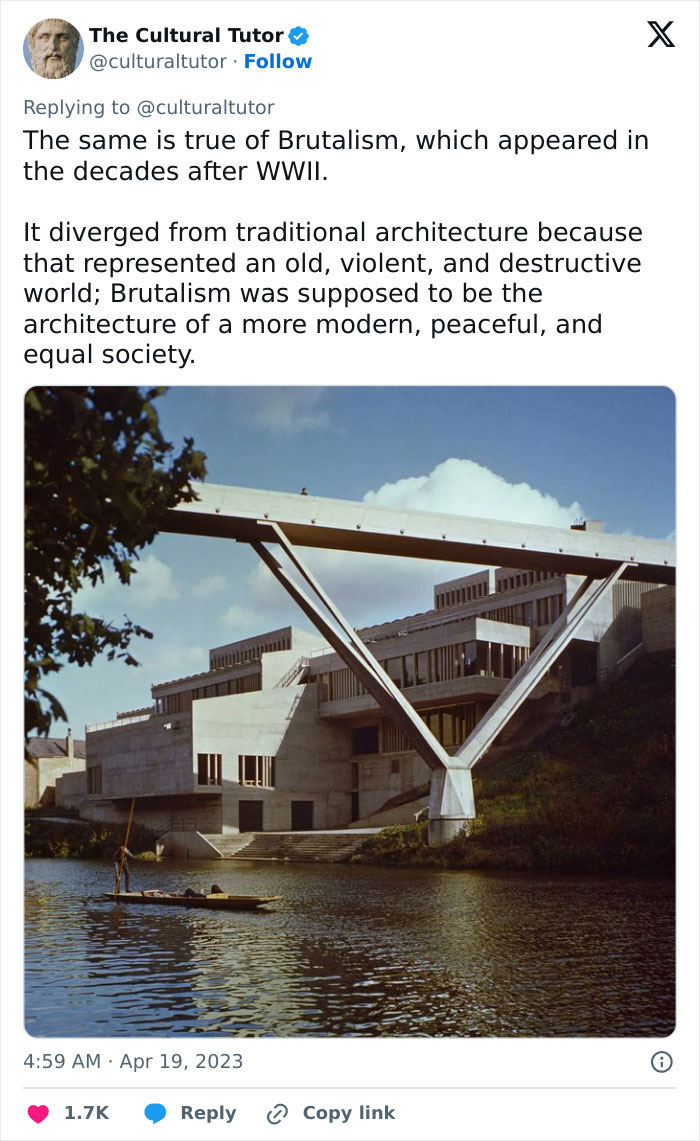
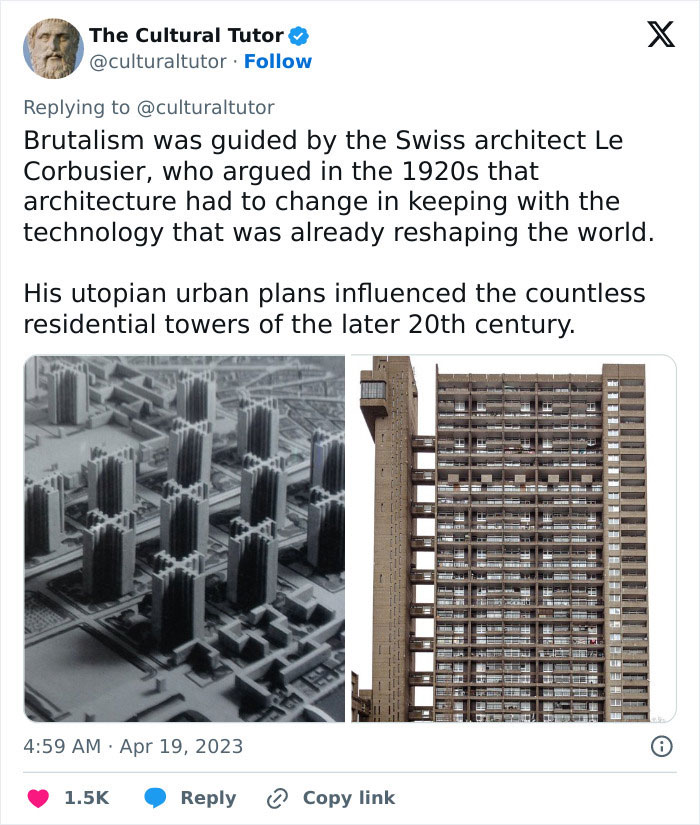
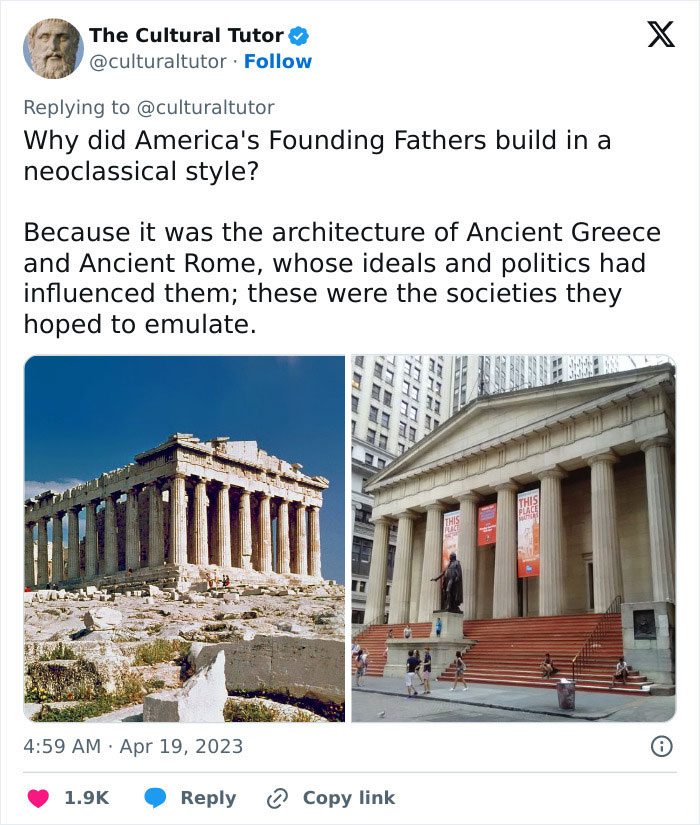
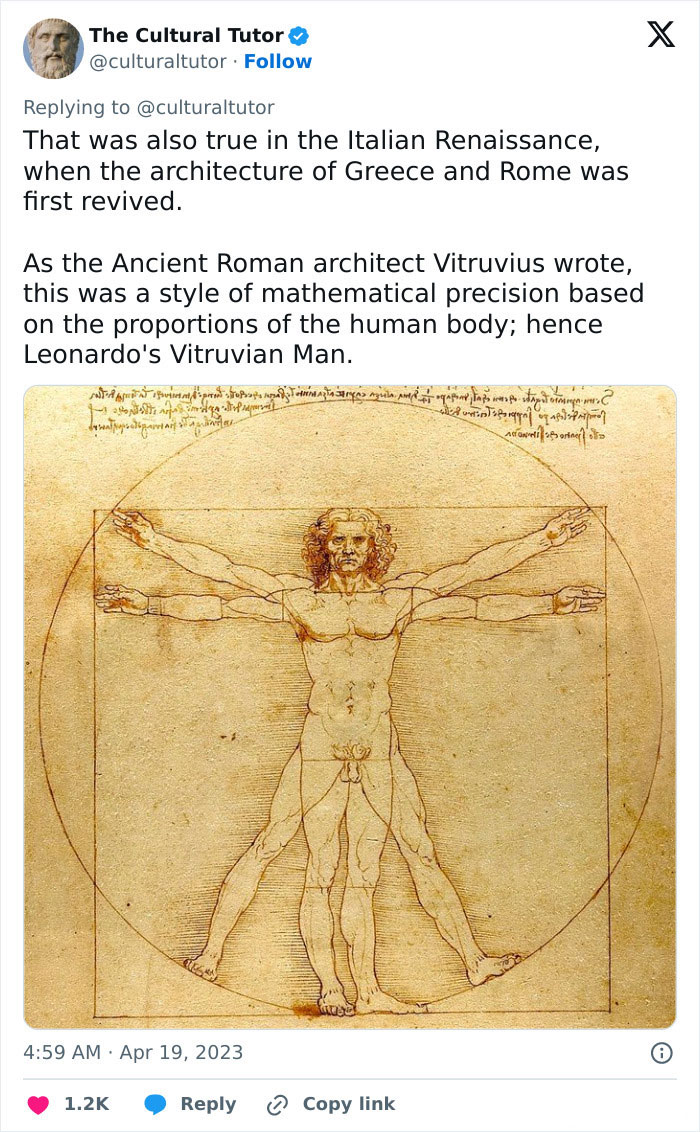
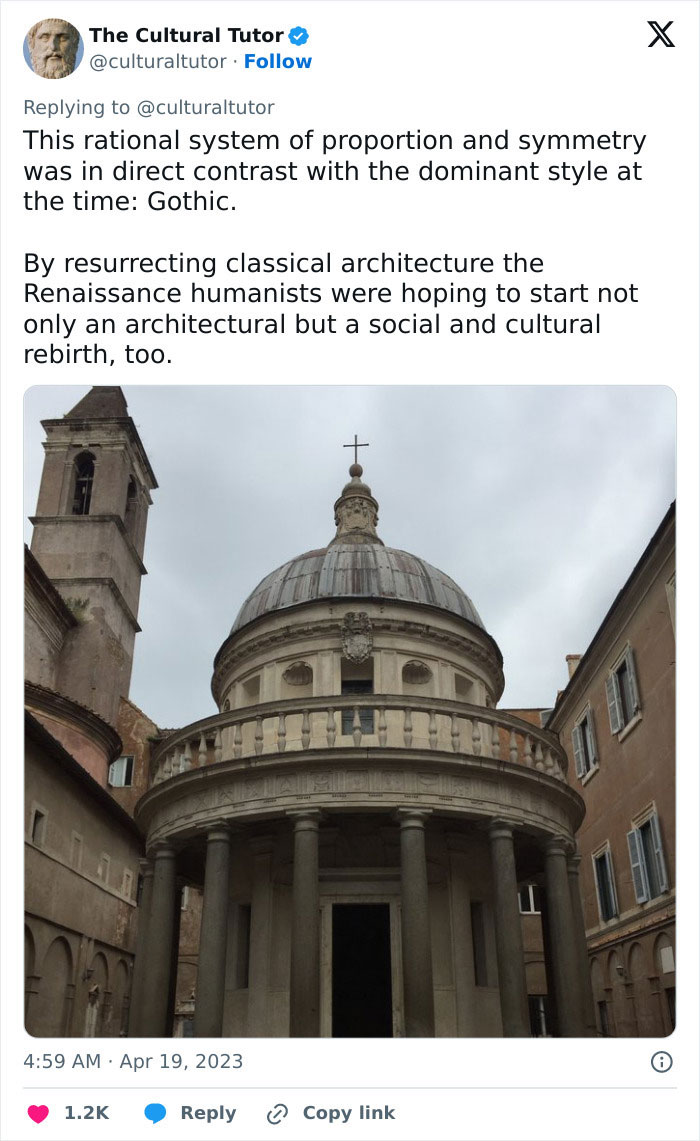
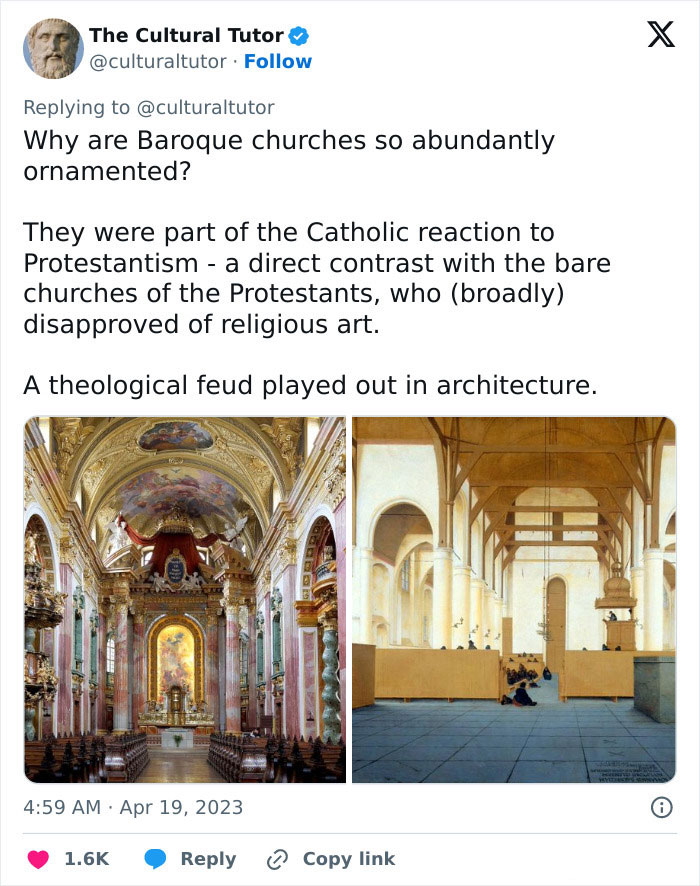
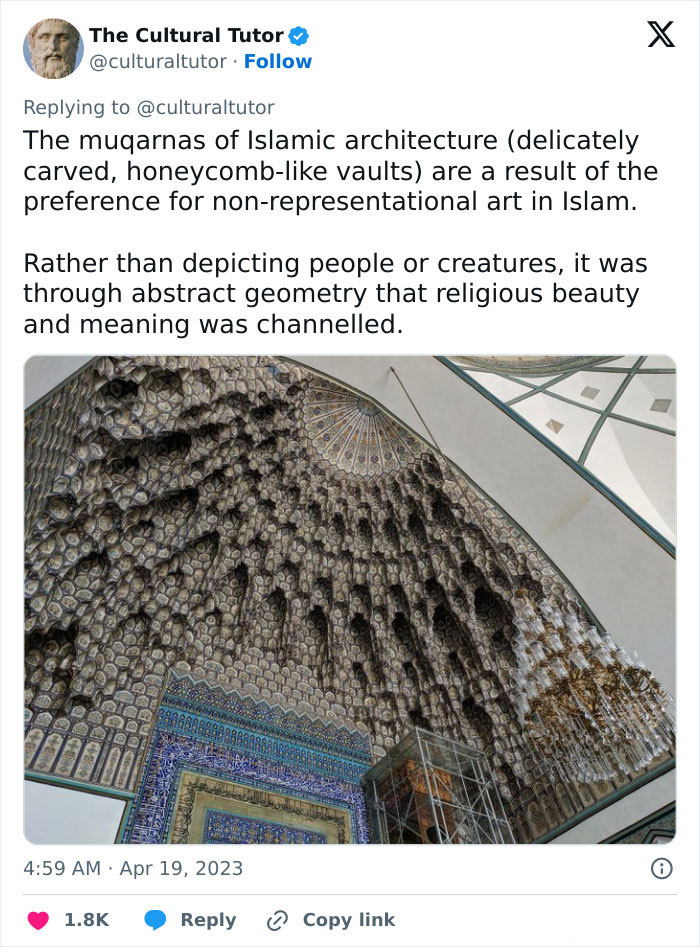
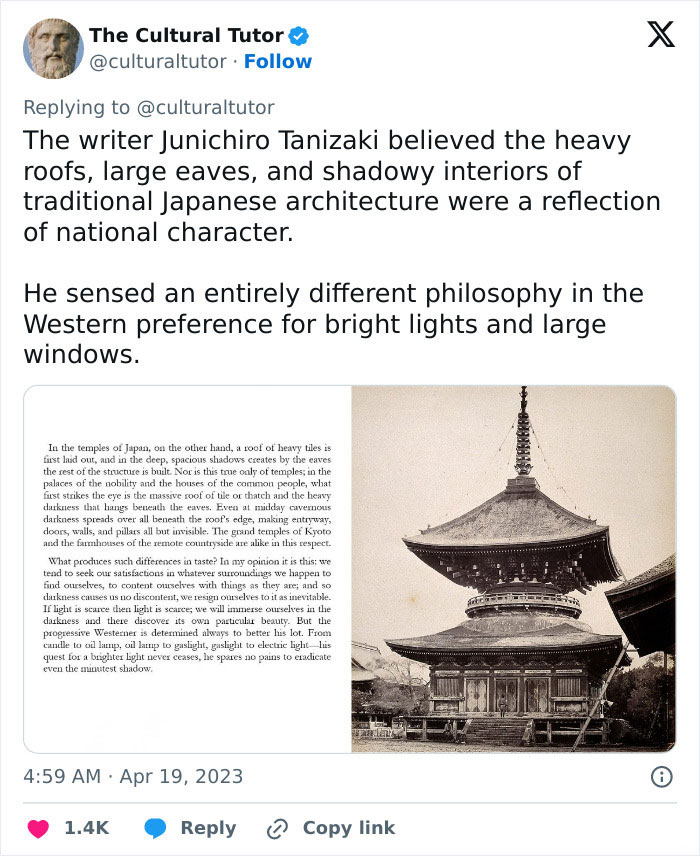
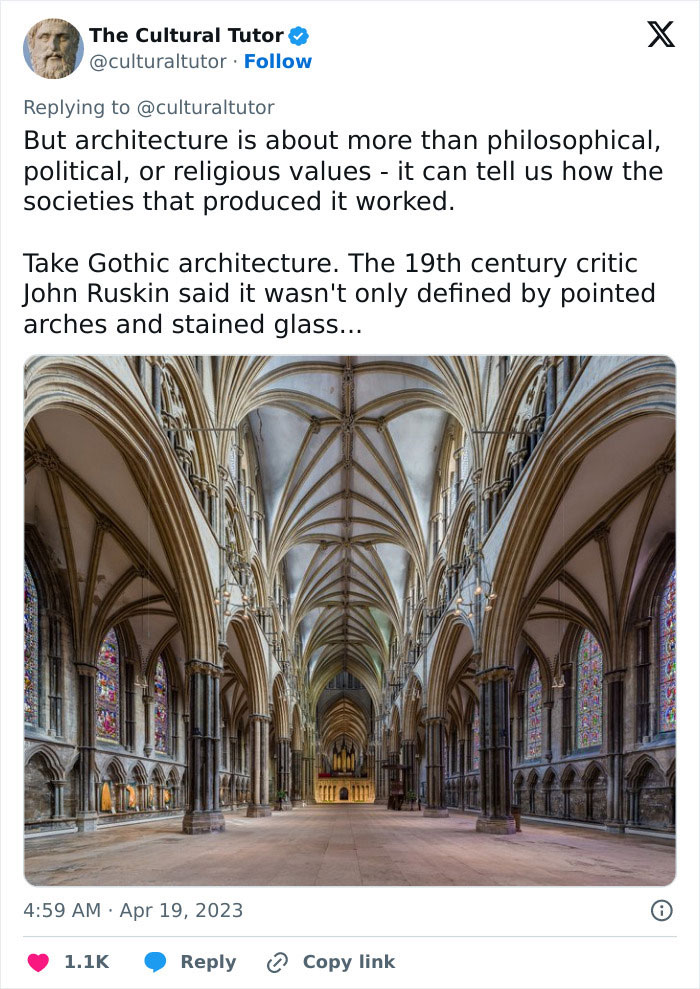
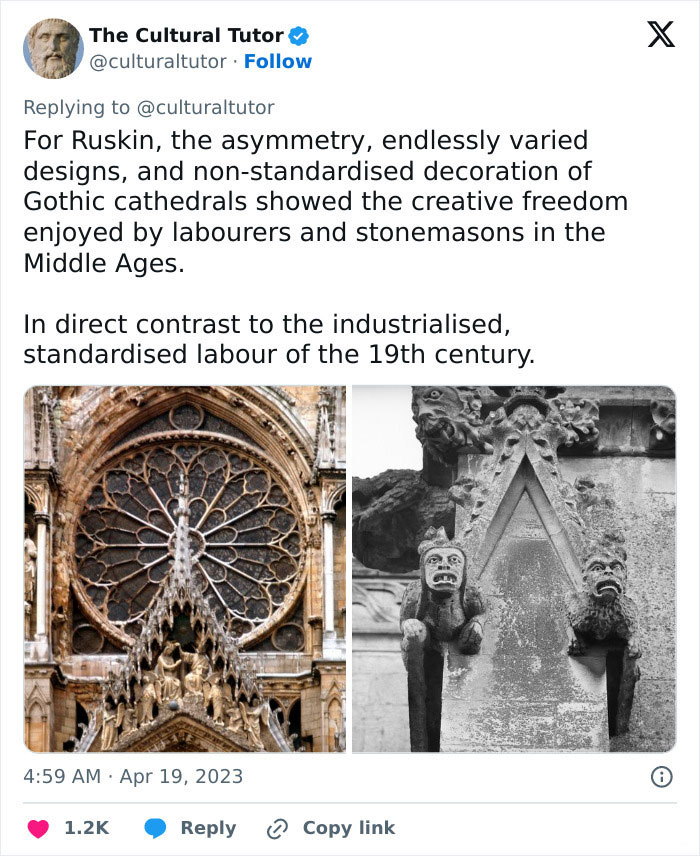
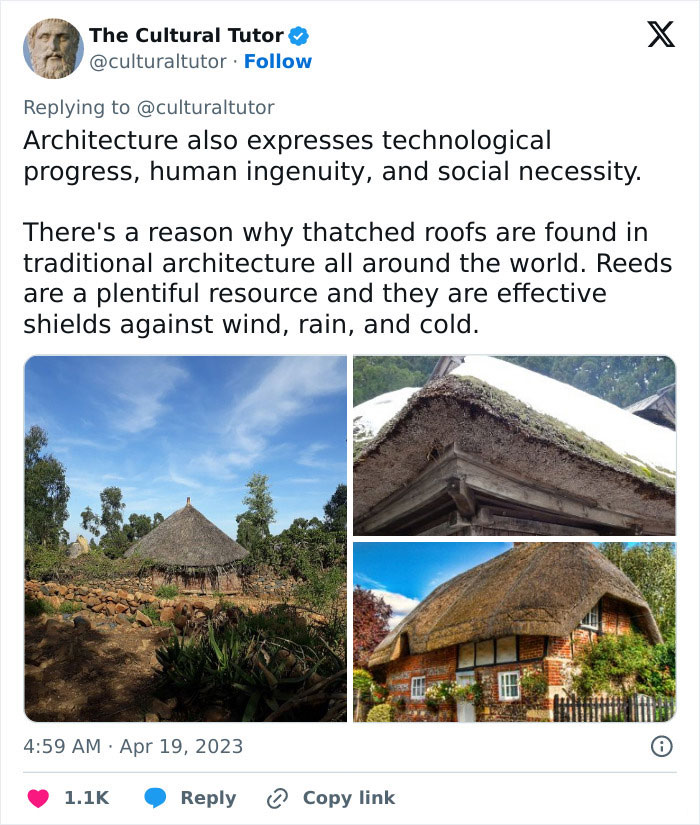
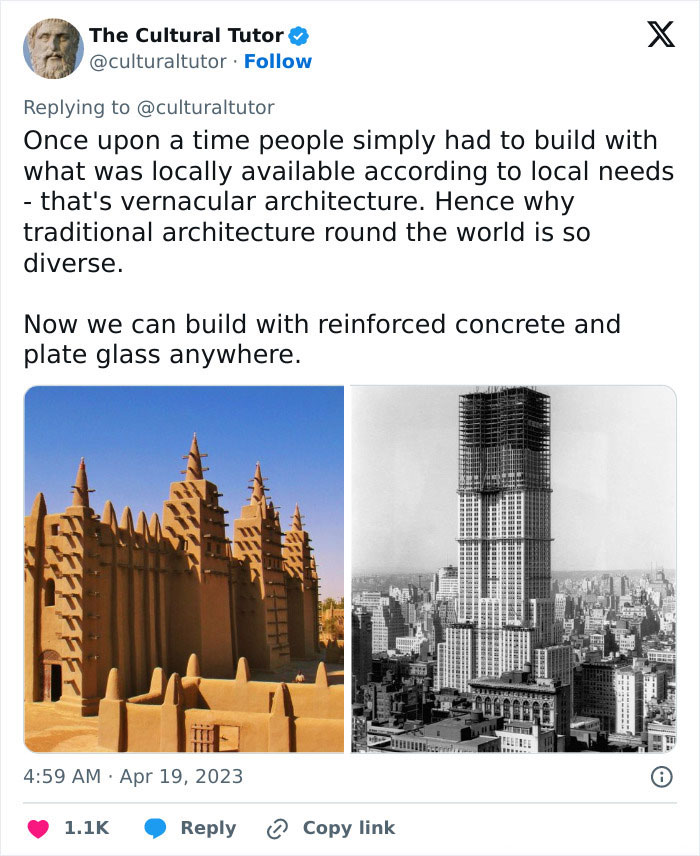

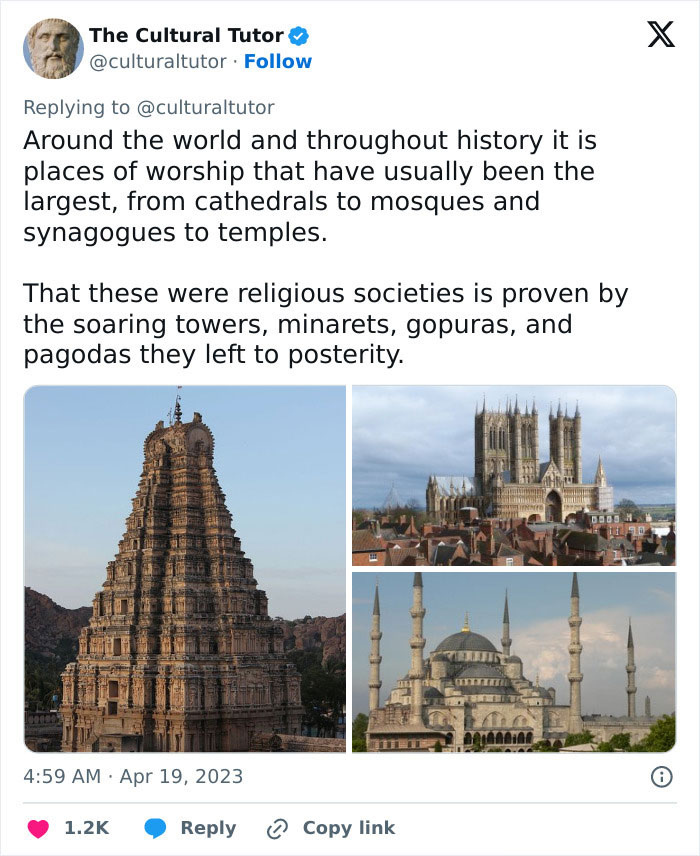
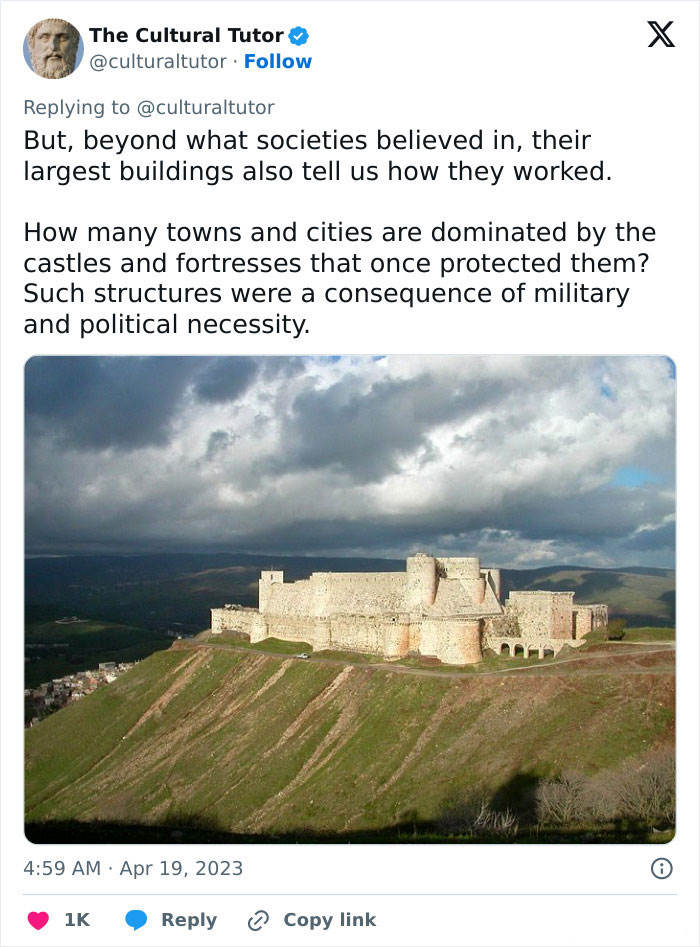
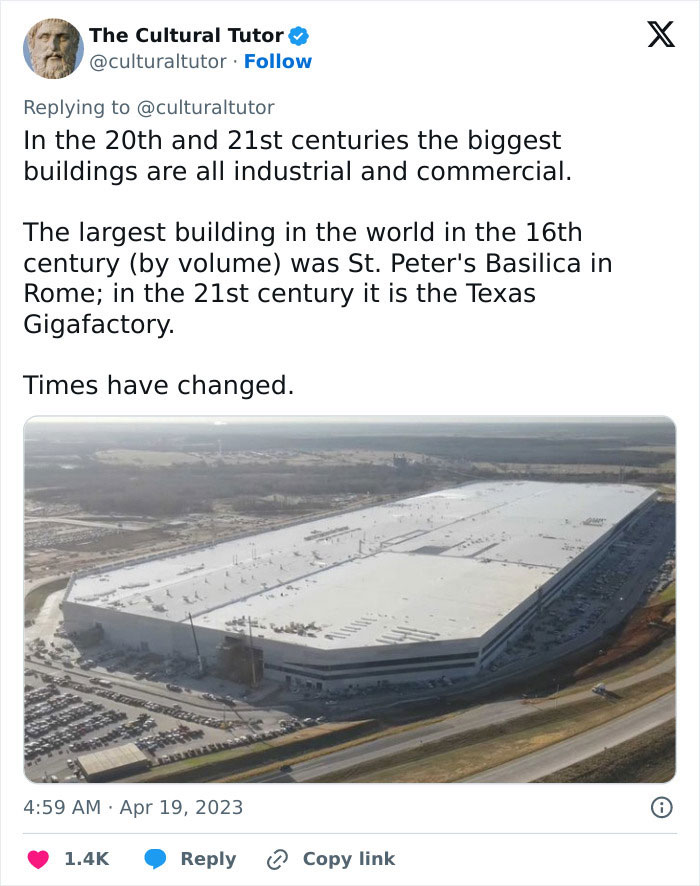
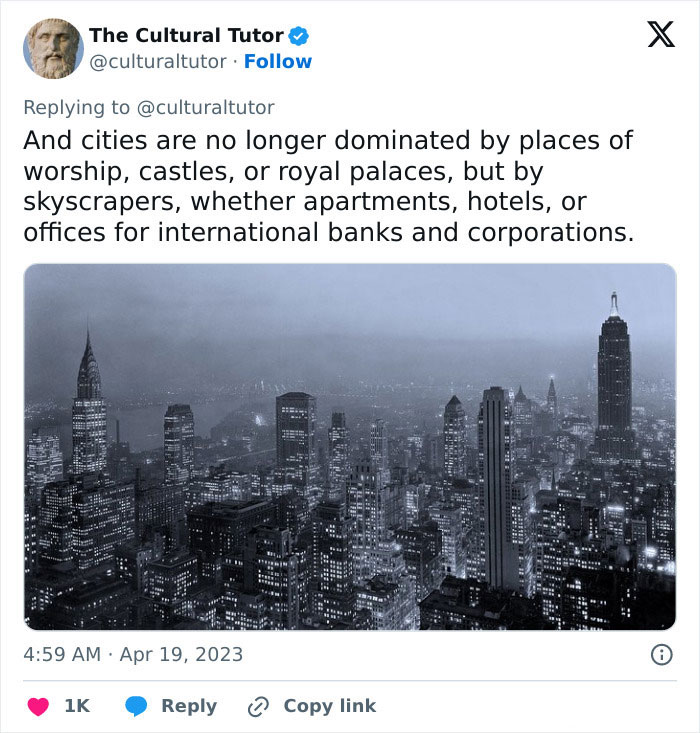
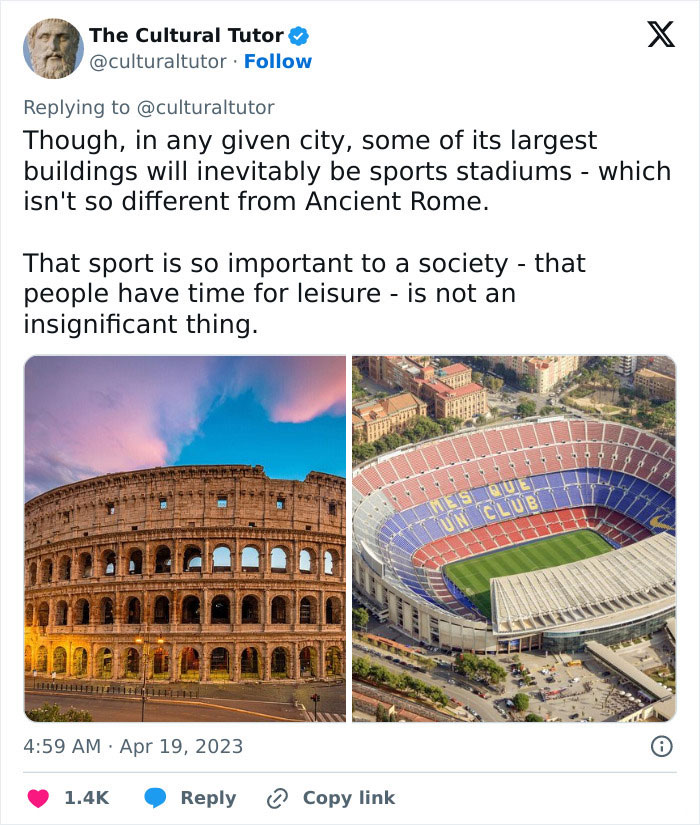
It’s not just the types of buildings that are important. What’s also essential is how the area is planned out
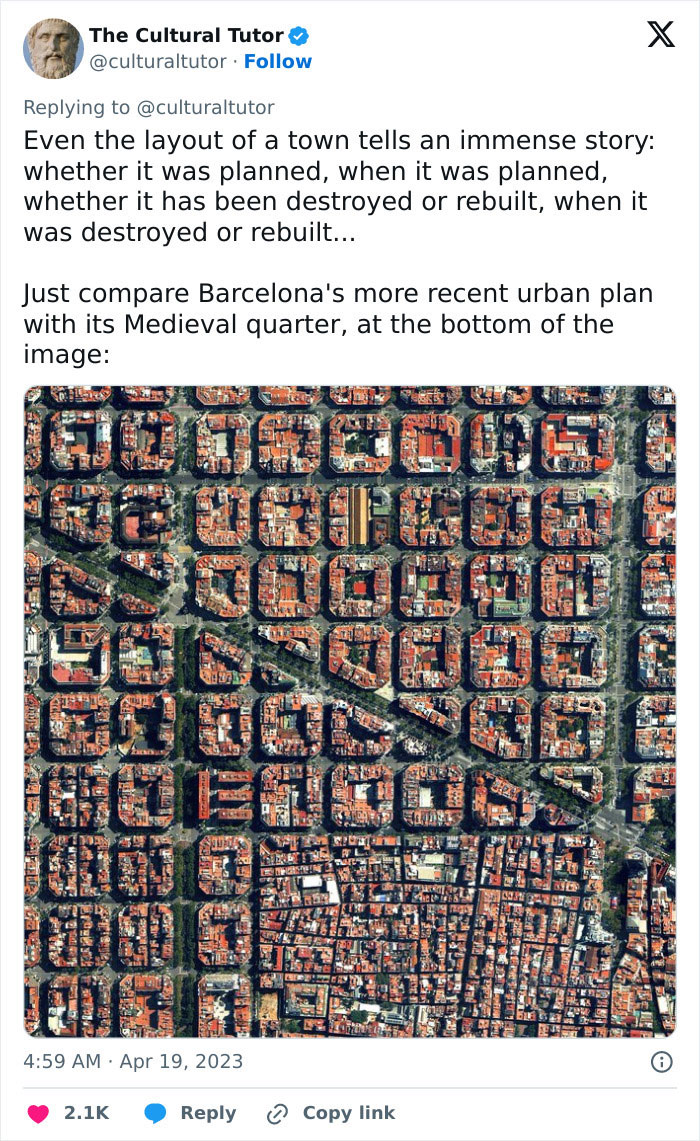
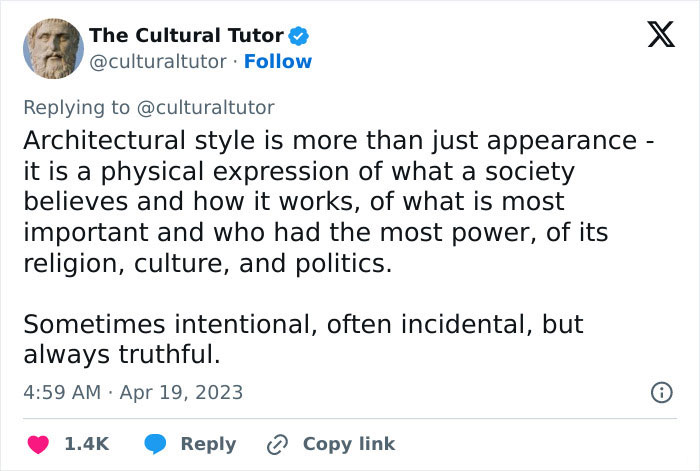
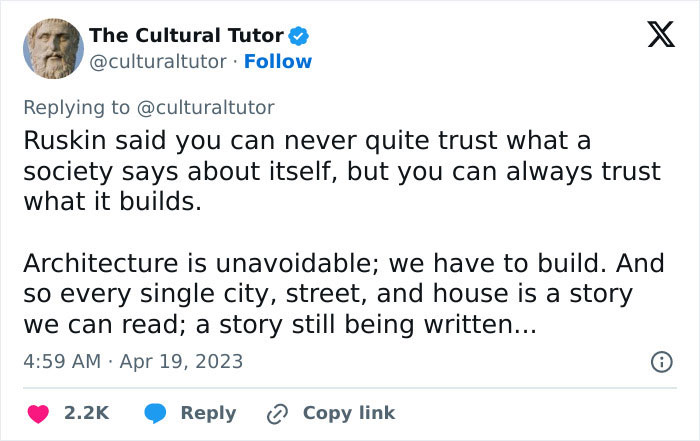
The X account’s thread was a massive success and brought architecture as a topic into the lives of millions of people. At the time of writing, the thread was viewed 5 million times and had 41.7k likes. The account itself has 1.5 million loyal followers.
As ‘The Cultural Tutor’ stressed in their post, architectural style is more than just about aesthetics and appearance. Beyond those details liecultural values, technological know-how, and what society as a whole prioritizes in terms of leisure.
Meanwhile, an area’s layout can reveal a lot about how much the local building projects were planned in advance versus where organic growth occurred.
According to the X account, architectural style is the physical expression of what a society believes and how it works. On top of that, it also shows who in society has the most power, and what’s most important to the people, and grants us insights into the role that culture, religion, and politics play there.
Public spaces are far more than just their aesthetics
During a previous interview withBored Panda, an urban planning expert, from Sweden,shed some lighton aesthetic standards in cities and the importance of the approach to designing public spaces.
“Most of the time, the elements of the built environment should be in harmony amidst each other and with the surroundings. However, sometimes, something bolder and out-of-the-box might form an engaging contrast,” she explained to us earlier. The urban planning expert added that built environments should engage people and stimulate their minds and senses, making them think.
“There are circumstances where the architecture should create a sense of calmness and safety, yet there are instances in which it is not bad if the architecture provokes us and makes us think, ‘Why don’t I like the look of this building?’” she said.
“Quirky architecture comes from our innate desire to demonstrate our uniqueness. However, not everyone who has the means has an average taste for aesthetics. Yet, as long as it is for the people who inhabit or use their private space, I mean why not? But, I think that we should not cross that thin line where architecture becomes reserved for only the wealthy and for those with ‘good taste’ (whoever decides that).”
According to the expert, there should be a consensus between the public and the professionals when designing public spaces.
“Even though I often advocate for unconventionally looking buildings, I do not encourage purposefully provocative architecture. The building should be designed with the intention to accommodate and protect society. It should create a sense of safety but not be boring,” she said.
“Also, I prefer somewhat complex but systemic designs. Minimalistic and box-like floor plans are good in some cases where easy access is necessary (for example, hospitals) yet they can be completely mind-numbing while more complex floor plan designs are more mind-stimulating (for example, good for schools, in my opinion).”
Well-designed buildings and spaces will balance form, as well as function
Good architectural design, at its core, is a mix of function and form. The buildings themselves need to meet the needs of the people living in the local area. They ought to create a comfortable and safe environment for everyone and be easy to navigate.
On top of that, the buildings also have to be aesthetically pleasing. Our environments can have a large impact on us and how we feel. Many people would probably prefer to live in an area that is beautiful and detailed rather than one that is completely bland and utilitarian.
On the flip side, building designs that are all style and no substance are also to be avoided. Just because the environment is beautiful doesn’t mean much if you can’t even sit down comfortably or if the space might not be wheelchair accessible.
Some architects are also able to weave eco-friendly design features into the projects, but this won’t happen everywhere. The focus on sustainability is a reflection of an architect’s personal values, as well as those of the public: different professionals working in different locations might make other values a priority.
For some more insightful posts from ‘The Cultural Tutor,’ be sure tocheck outBored Panda’sprevious features.
The thread received a lot of attention on social media. Here’s what some internet users had to say
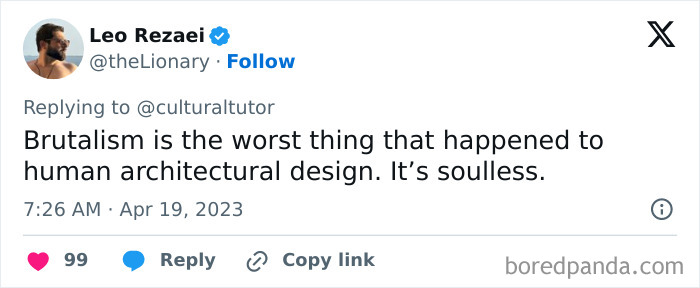
Image credits:theLionary
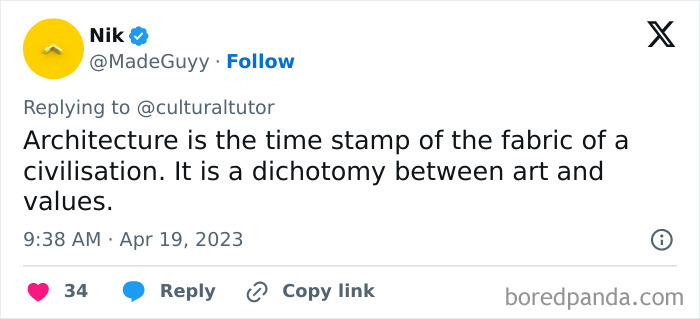
Image credits:MadeGuyy
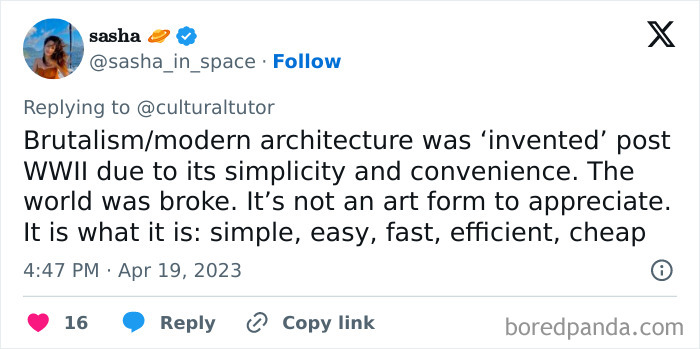
Image credits:sasha_in_space

Image credits:Thomasslabbers
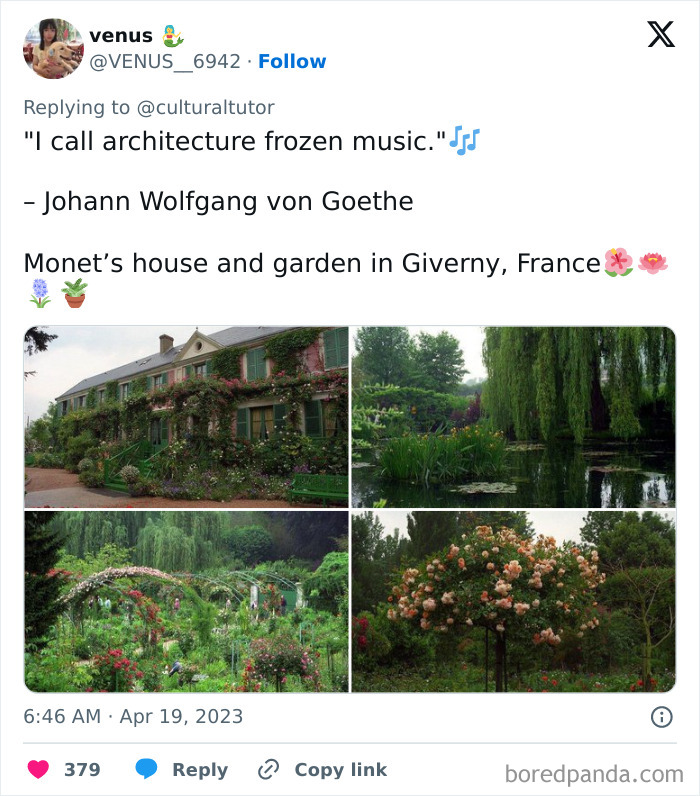
Image credits:VENUS__6942
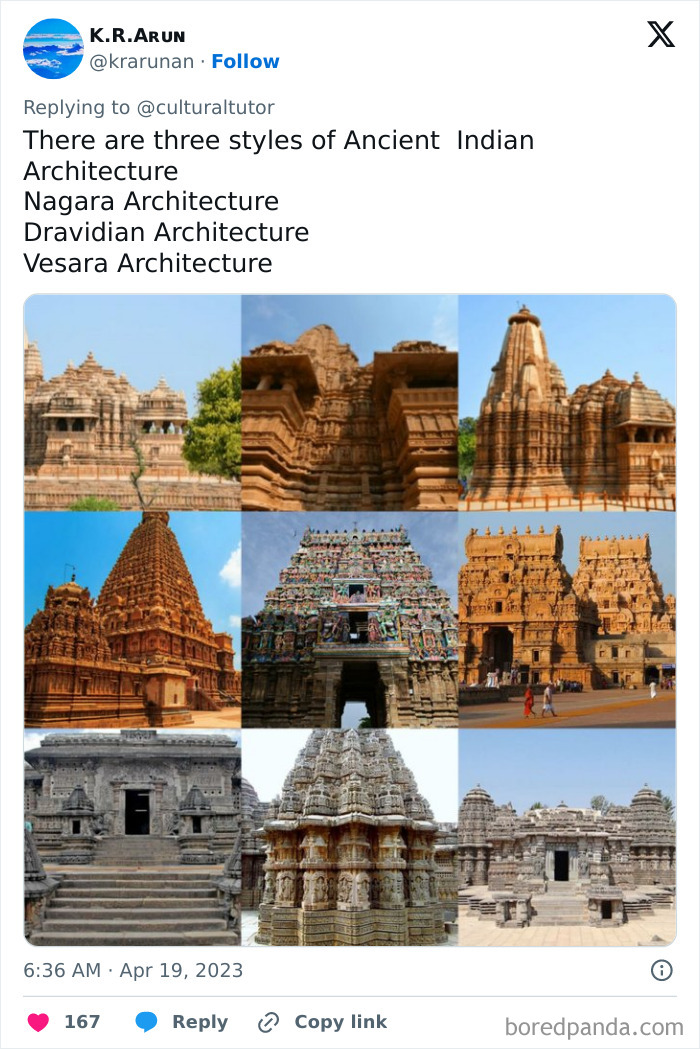
Image credits:krarunan

Image credits:khurshud
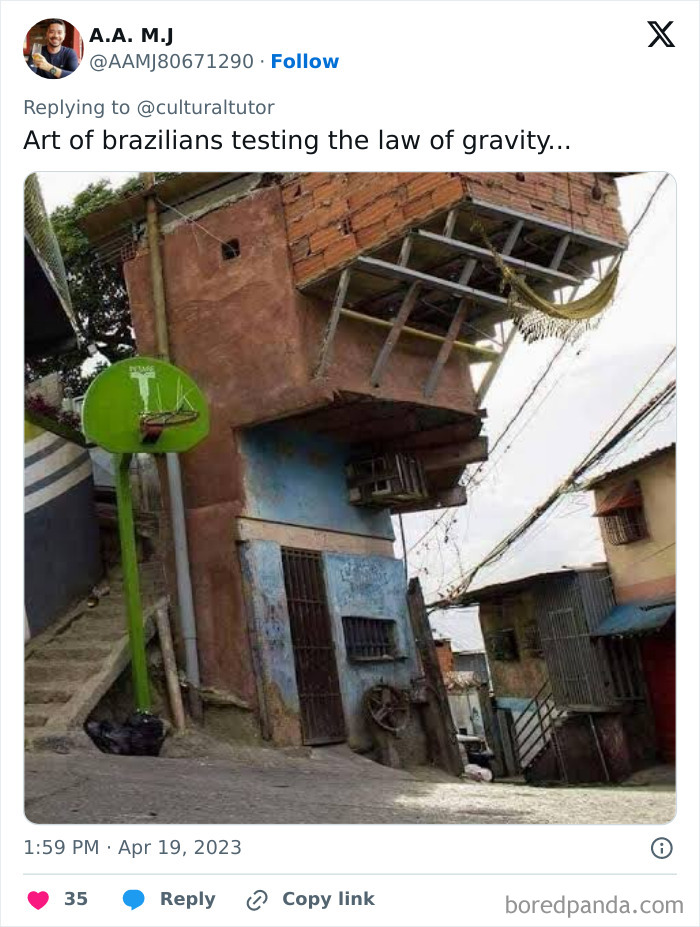
Image credits:AAMJ80671290
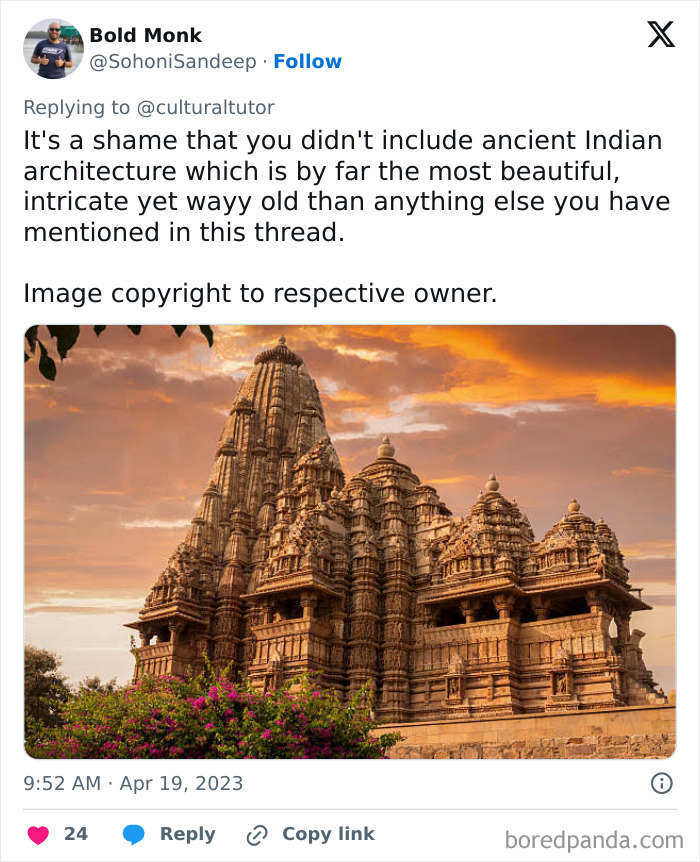
Image credits:SohoniSandeep
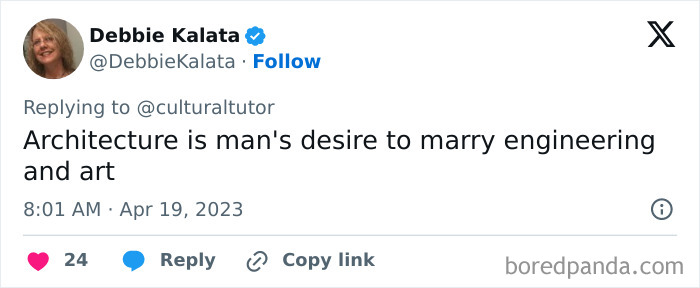
Image credits:DebbieKalata
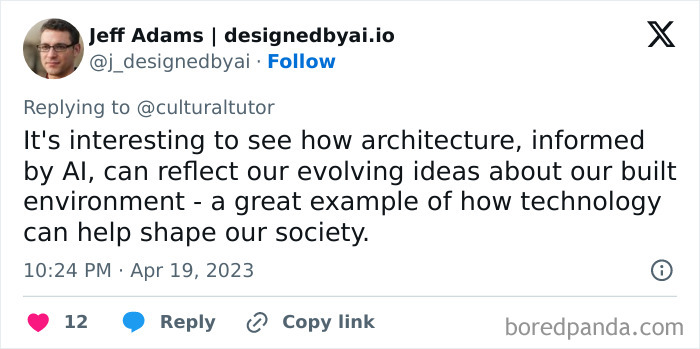

Image credits:GaKePe
Architecture